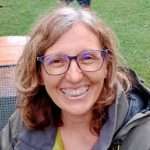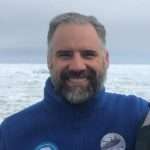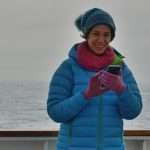Geophysics and Geology of the Subsurface Research Group
Summary
The Group of Geophysics and Geology of the Subsoil (GEOFSUB) carries out research and development work in the field of geophysical exploration of the subsoil and 3D modeling of geological structures and formations. The GEOFSUB research group promotes its own research projects and, in addition, offers expert support in all the activities of the IGME.
The current GEOFSUB research group is constituted by 23 members from the former Geophysics and Remote Sensing Area and Subsurface Geology and 3D Geological Modelling Area and new members. Its differentiating element is the extensive geological knowledge and geophysical techniques, which allows the optimal characterization of the subsoil.
Working areas
The main objective of GEOFSUB research group is to generate 2D and 3D geological and geophysical knowledge of the deep and/or the shallow subsurface, using terrestrial and/or marine data, to characterize and model geological structures and formations and their correlation at depth. It also aims to obtain new geological and geophysical data that feed and maintain the IGME (CSIC) SIGEOF database, an institutional IGME database, together with other national and international databases. This allows the generation of new geophysical cartographies in both national and international projects.
Geophysical and geological modeling is key in some of the Horizon Europe objectives, being essential for climate change mitigation strategies and the ecological transition. In this sense, it is fundamental for the characterization of structures capable of acting as geological storage (CO2, H2), the exploration of mining and energy resources (including renewable energy sources such as geothermal) and the characterization of aquifers. It is also a basic tool for the detection and control of contamination remediation in the subsoil.
Research and technical lines
The research lines of the GEOFSUB group include:
- Characterize and model major regional geological structures at different scales and in different geodynamic contexts.
- Develop, optimize and implement methodologies, tools and workflows in geological and geophysical modeling and reconstruction.
- Acquisition of new data and generation of 2D and 3D geological and geophysical models. Obtaining geological data (structural geology, stratigraphy, sedimentology, dredges, gravity and piston cores, among others) and geophysical data (airborne, marine, surface and boreholes: electrical, gravimetric, magnetic, radiometric, electromagnetic, petrophysical, paleomagnetic, core-logging, active and passive seismic, marine multichannel and single-channel reflection and high-resolution seismic, bathymetry and backscatter, among others).
- Maintain a knowledge infrastructure that allows supporting other actions and projects that require expertise in geophysics, 3D modeling, paleomagnetism, paleoceanography and tectonics.
- Develop quality and rigorous research through different research projects of the National, European and Regional research plans, and national and international dissemination of the obtained advances.
Competences and abilities
The GEOFSUB group carries out research in the Spanish territory, including its continental margins. Among others, the works carried out in the Pyrenees region, on the continental margins of Galicia, Cantabria, Valencia, the Canary Islands and the Gulf of Cadiz are very relevant. They also carry out geophysical studies in Miocene sedimentary basins as Guadalquivir, Duero, Guadiana, Ebro y Granada basins. Research actions carried out in other countries and international territories include Angola, Argentina (Andes and Tierra del Fuego), Australia (Tasmania), Morocco, Uganda, European and Caribbean margins and, most notably, in Antarctica. It is particularly noteworthy the specialized technical assistance in geophysical prospecting of the GEOFSUB research group to support projects and lines of research developed at the CN-IGME.
Finally, the potential applications of our know-how include: Planning and organization of the territory; search and management of geological resources (water, minerals, geothermal, industrial rocks, energy resources...); search and characterization of geological stores, both of resources and waste, at environmentally and socially safe subsoil levels, both on land and at sea; delimitation and monitoring of areas with potential geological risk (floods, landslides, earthquakes, underwater instabilities, tsunamis, volcanic eruptions); management and conservation of natural heritage; prospecting of buried historical and archaeological heritage; Environmental, Biomedical and Biomagnetic sector basic research; education and scientific dissemination.
Outreach activities
The Group carries out significant scientific outreach activities. Its notable activities include:
- Organization and participation in outreach events: Geolodía, Mi Primer Geolodía, Geocharlas, Women and Girls in Science Day, geological walks, and outreach itineraries.
- Participation in the development of field guides.
- Guest speakers at research centers, museums, community centers, universities, and secondary, primary, and preschool educational centers.
- Participation in CSIC science weeks.
- Media interviews and collaborations with popular press and magazines.
- Publication of popular science articles and popular books.
Training activities
-Doctoral Thesis Supervision.
- Training activities in official and Master's programs at universities across Spain.
- Supervision of Master's Thesis and Final Degree Projects at various universities: University of Oviedo, Complutense University of Madrid, Autonomous University of Madrid, University of Salamanca, University of Zaragoza, University of Granada.
- Supervision of university internships and research stays.
- Regarding training activities and, specifically, regular university teaching, two members of the group teach Geology and Environmental Sciences at the Complutense University of Madrid (UCM) and Autonomous University of Madrid (UAM), respectively, as associate professors. Another six are part of Master's Programs at the University of Zaragoza and the Complutense University of Madrid. In addition, up to 10 members of the group have taught at the university level.
- The group has been participating for several years in the CSIC and AEAC "Scientists in Practice" program, hosting 3rd-year ESO students for a week to learn about and participate in our research projects.
- The group has academic licences for 3 seismic interpretation programs: Kingdom Suite (S&P Global https://kingdom.ihs.com/), Petrel (SLB https://www.slb.com/products-and-services/delivering-digital-at-scale/software/petrel-subsurface-software), and PaleoScan (Eliis https://www.eliis-geo.com/download-a.html#set-up).
Involved projects
Available services
Scientific production
(Articles whose authors are group members)




